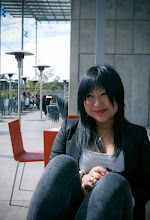My project is an exploration of how the weight of functionality or beauty control a viewer's perception of information. Information design is hard to define as all successful graphic design communicates some sort of information, but to try and narrow it down, I tend to define information design as translating complex information graphically so people can clearly and efficiently understand that information.
There are popularized and familiar forms of information graphics. We have all learned how to create pie charts and simple bar graphs in elementary school math classes, and now we can easily make them on our computers. Are the graphs and charts yielded from these methods considered information design? To me, these kind of graphics create one end of the information design spectrum, a very practical and utilitarian rendering style where the weight of the design focuses on functionality and practicality.
Then, there are designers who push the boundaries of readability and functionality in attempts to establish information design as a true art form. They focus their weight on the overall aesthetic quality of a design. This forms the other end of the spectrum.
In between these two is the design that balances functionality and aesthetic beauty. When these two marry together harmoniously, how does the reader perceive it? Do they consider it to be a well designed graphic? I feel here is where information can be absorbed the greatest.
A viewer may read these two different kinds of designs differently. A utilitarian and functional design would serve its informational purpose and will be easily read as a graph. A design that focuses on beauty could invoke a different read. Maybe, the designer is successful and the graphic loses its function as an information graphic and becomes more of an artist composition.
I want to create informational graphics and design posters to explore both ends of the design rendering spectrum, differing the weight of function and beauty, and the point at which they are balanced. I want to also study how this spectrum changes a viewer's perception of the information and how they read the overall design.
For my project, subject matter becomes secondary. Although subject matter can directly effect how something is visualized, it isn't relevant in regards to how successful a design is in communicating information and it is this communication that is more important.
Now, when I look at the books I have, I can view them on this "spectrum." I, as the viewer, am perceiving each design differently. This is what really interests me.
One question that I would like to explore:
Can the same information portrayed these three different ways change how the viewer reads the design and absorbs the information?
Subscribe to:
Post Comments (Atom)


Hi Eileen,
ReplyDeleteMy initial thought is that subject matter will be more important than you think. Some information asks to be more functional (a stop sign is an extreme example), and some might benefit from being more beautiful. The balance you are looking for will change based on the specific information.
As for your final question, There wouldn't be designers if thier choices didn't have an effect on how we comprehend information.
The spectrum between functionality and aesthetics is full of possibilities, but you need to ask harder questions. Look at information design around you. Do you think it should be more beautiful? more functional? Why? Do you think that perfect balance is often achieved, or rarely? I think more specific questions will depend on your subject matter.
If you ever want me to look at your work before or after class just let me know.
See you Monday!
What I was trying to say is that subject matter is secondary in that it will only influence the specific visual characteristics of the pieces and not the idea of the comparison itself. My abstract is trying to lay out the general direction for my project as it stands now and isn't dealing with specific visual characteristics that result from subject matter as of yet. I recognize that my choice of subject matter will influence my project, but not at this stage of development. I want to refine the comparison between utilitarian and aesthetic based design before going more deeply into specifics.
ReplyDeleteAs for the question, I agree it needs refinement. I have been in contact with Doug Hesseltine who is helping me develop more specific and harder questions. I am trying to go about the questions in a "scientific" way so that they don't yield subjective answers.
Thanks for your response!